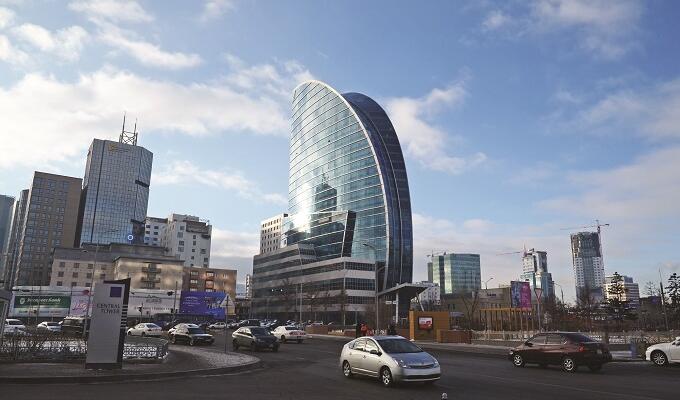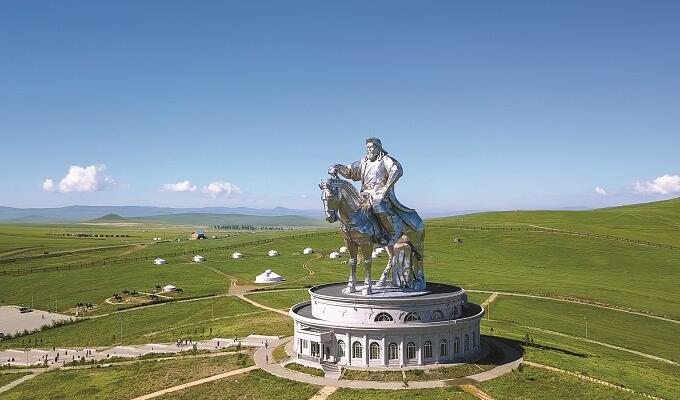



Five million stars
International Trade Forum collected the views of His Excellency Khaltmaagiin Battulga, the President of Mongolia, on sustainable tourism opportunities in his country
Khaltmaagiin Battulga was born in 1963 in the Mongolian capital Ulaanbaatar. In early life, the president was both an artist and an athlete before turning to business and politics. He served in several ministries before being sworn in as president of Mongolia in July 2017. The president took time out of his busy schedule to talk about Mongolia’s truly unique offering to global tourists, the Nomadic by Nature lifestyle – and what it means for the nation’s economy.
Your Excellency, Mongolia is known for exporting mineral commodities such as copper and coal. How does Mongolia plan to diversify the economy, and what role does sustainable tourism play?
Although the mining industry is the main export sector in Mongolia, we are aiming to diversify the economy and accelerate further the development of non-resource sectors. We believe that focusing on the sustainable development of tourism and agriculture will contribute to sound economic expansion in our country.
Statistics show that the tourism sector has been developing rapidly in recent years. International tourist arrivals worldwide reached 1.4 billion in 2019, with earnings growing to $1.7 trillion.
Mongolia, as a sparsely populated land with untouched nature, a traditional nomadic lifestyle and culture, unique history, geography and biodiversity, and even as a cradle of paleontological and archaeological finds, has great potential for tourism development. Therefore, we are directing our state policy to utilize our resources and develop dynamically sustainable tourism to the full.
The development of sustainable tourism will also play a key role in accelerating rural economic development, increasing employment, reducing poverty, improving the living standards of women and people with special needs, ensuring environmental balance, and protecting and promoting historical and cultural heritage.
What spillover effects and linkages could tourism value chains bring to Mongolia? Is there a regional dimension?
A special feature of Mongolia is that it borders the two countries with the highest growth in tourism, leading in the number of sent and received tourists in the Asia-Pacific region and leading in the number of sent tourists in the world.
Just two hours’ flight away from Beijing and less than five hours’ flight from major cities in China and Russia, as well as such countries as the Republic of Korea, Japan, Thailand and Kazakhstan, Mongolia’s location is geographically convenient for receiving tourists from these countries, as well as for developing into a hub connecting Asia and Europe. This is a great advantage.
Also, due to the preserved nomadic culture and low population density, citizens of developed countries are increasingly interested in Mongolia to temporarily stray from their daily lifestyle, get closer to nature and seek adventure.
Therefore, we are cooperating with neighbouring and regional countries in launching and developing products that attract the most significant number of tourists on the international tourism market, such as the Silk Road, Trans-Siberian journeys, the Tea Road and Northeast Asia.
In particular, Mongolia is one of 33 member countries of the Silk Road Tourism project of the World Tourism Organization. Mongolia took part in the FESPO exhibition in 2019 in Switzerland as an official partner, and at ITB Berlin in Germany, Mongolia announced the launch of a new web platform www.mongolia.travel.
Using this platform, foreign and domestic travellers can become content providers by posting a public post using the hashtag #FeelMongolia on social media.
What in Mongolia’s sporting and artistic culture should visitors experience?
Mongolia offers tourists the opportunity to truly experience the nomadic lifestyle and culture of living in harmony with nature and the environment, leaving no trace, inherited for thousands and thousands of years.
Visitors to Mongolia can experience nomadic life by travelling on horseback, hunting with eagles and falcons, moving with yaks and camels, reindeer riding and being served with traditional dairy products and beverages. This is an exceptional cultural tourism product that is unique throughout the world.
In mid-July, all over Mongolia, visitors can enjoy the traditional ‘Three Manly Games,’ which include national sports such as wrestling, archery and horseracing. In addition, many tourists are attracted by annual events such as the Ice Festival, the Eagle Festival, the Ten Thousand Camels Festival, the Golden Eagle Festival, and the Winter Horse Festival.
In recent years, there have been regularly organized mountain-sports events on snow-capped mountains, fishing and hunting trips, off-road auto races and marathon running events in the steppe and desert areas.
In addition to traditional folk art, Mongolia is also developing modern music, dance, film, and classical arts. A recent popular example - not only in Mongolia, but also around the world - is The Hu band, which created a new genre of ‘Hunnu rock’ integrating traditional art components such as horse-head fiddle and ‘throat singing’ with modern rock music. This is just one example of how Mongolian art and culture is developing at a competitive level in the world.
Beyond its unique heritage, what does modern Mongolia offer tourists who want to travel sustainably?
Although Ulaanbaatar, home to about half of Mongolia’s population, is a fast-growing modern city of course, most tourists in Mongolia choose to visit its natural environment.
Mongolia, with its vast territory, offers tourists a unique travel experience in every corner of the country. In different regions, you can participate in different travel experiences: watch wildlife and have mountain hiking adventures in the Western region; join sand dune hikes following dinosaurs’ footprints in the Gobi; walk through historical sites associated with Genghis Khan in the East, and experience the beauty of nature in the Khangai mountains.
Tourists say that staying in a Mongolian ger (yurt), which is a main component of the nomadic lifestyle that tourists experience during their journey through the natural sights of Mongolia, left them with fond memories, not of a five-star trip, but of a five-million star trip!
In recent years, tourists are choosing more local tours with a low-impact influence on nature and the environment, as well as new destinations that are not yet familiar to many tourists, which makes Mongolia undoubtedly one of the destinations for sustainable ecotourism. On this note, I would like to welcome your readers to visit Mongolia: Nomadic by Nature.



